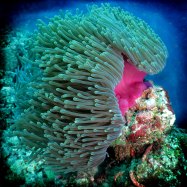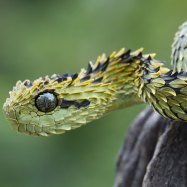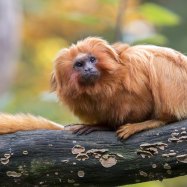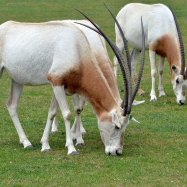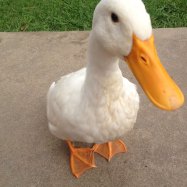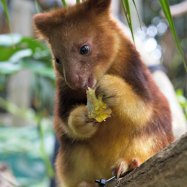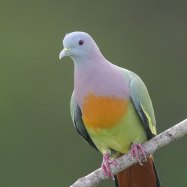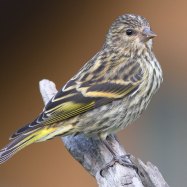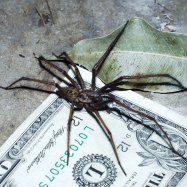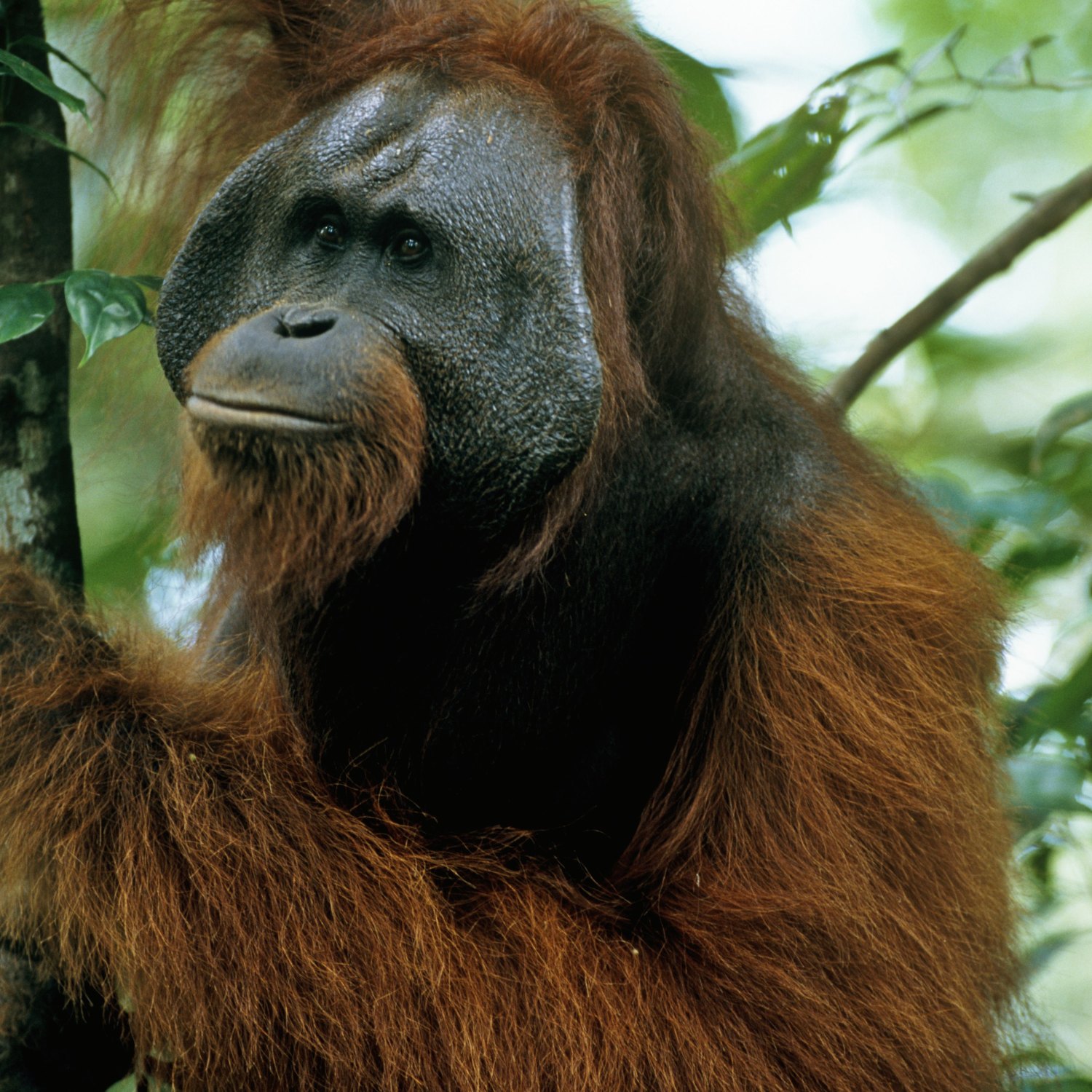
Bornean Orangutan
1-1.5 meters
Did you know that the Bornean Orangutan, found in Southeast Asia, is the largest arboreal (tree-dwelling) animal in the world? With a length of 1-1.5 meters and a robust body shape, these intelligent creatures are part of the Hominidae family. Visit their natural habitat to witness their unique behavior and help to conserve their population. #BorneanOrangutan #SoutheastAsia #Hominidae #Conservation
Animal Details Summary:
Common Name: Bornean Orangutan
Kingdom: Animalia
Habitat: Rainforests
Bornean Orangutan: The Red Gentle Giant of Borneo
The Bornean Orangutan, or scientifically known as Pongo pygmaeus, is a majestic primate that calls the lush rainforests of Borneo home. These gentle giants are known for their distinctive reddish-brown coloration and have captured the hearts of many wildlife enthusiasts and researchers alike.Belonging to the Kingdom Animalia and Phylum Chordata, the Bornean Orangutan is part of the mammalian class and the primate order. They are the largest arboreal animals in the world, meaning they spend most of their lives living in trees Bornean Orangutan. Let's take a closer look at these amazing creatures, their habitat, behavior, and why it is crucial to protect their existence.
Habitat and Geographical Distribution
Bornean Orangutans are endemic to the island of Borneo, which is shared by three countries - Malaysia, Indonesia, and Brunei. They are mainly found in the lowland rainforests, but can also be seen in mountainous regions and peat swamps. These primates are particularly fond of dense forests with tall trees, as it provides them with a suitable environment for their arboreal lifestyle.Sadly, their habitat is under constant threat due to deforestation, primarily for palm oil plantations. This has led to a significant decline in their population, as they have lost large portions of their habitat. In fact, according to the IUCN Red List, the Bornean Orangutan is classified as "Critically Endangered," with only an estimated 104,700 individuals remaining in the wild.
Characteristics and Appearance
The Bornean Orangutan is a sight to behold, with its long reddish-brown coat and distinctive round face with piercing, intelligent looking eyes. Their hair is longer than other great apes, making them well-adapted for living in the rainforests Bush Viper. They also have long, powerful arms that span up to about 2.3 meters, allowing them to swing effortlessly from branch to branch.Apart from their striking appearance, the Bornean Orangutans have impressive physical abilities. They are known to be four times stronger than the average human and have the strength to lift up to 30 times their body weight. This, combined with their excellent climbing skills, makes them well-suited for their arboreal lifestyle.
Feeding Habits
Bornean Orangutans are primarily herbivores, with around 60% of their diet consisting of fruit. However, they also supplement their diet with leaves, bark, flowers, insects, and occasionally, small vertebrates. Interestingly, their diet is incredibly diverse, and they have been known to consume up to 400 different plant species.The abundance of fruit in their diet plays a crucial role in the rainforest's ecosystem. As they move from tree to tree, they carry seeds and help to disperse them, allowing for the growth of new vegetation and biodiversity in the forest.
Social Structure and Behavior
As solitary animals, Bornean Orangutans usually live alone, except for females who stay with their offspring for the first few years. Males have a larger home range, which they need to patrol regularly to mark their territory and find food. They use a series of long, deep calls to communicate with others, and these calls can be heard up to a kilometer away.Females give birth to a single offspring every eight years, and the young stay with their mothers until they are around seven to nine years old. This extended period of dependency is the longest among all primates, and much of what the young ones learn is from their mothers.
How to Protect the Bornean Orangutan
The alarming decline in the Bornean Orangutan population is largely due to habitat loss, poaching, and the pet trade. To protect these amazing creatures, we need to take immediate action. One of the most effective ways is to reduce the production of palm oil, which is a leading cause of deforestation in Borneo.We can also support organizations and initiatives that focus on the conservation of Bornean Orangutans. These include rehabilitation centers, sanctuaries, and rescue operations for illegally kept pets. Additionally, making small lifestyle changes such as choosing sustainable products and reducing waste can also make a significant impact.
Conclusion
In conclusion, the Bornean Orangutan is a remarkable animal that deserves our utmost attention and protection. Their striking appearance, physical abilities, and crucial role in the rainforest ecosystem make them a valuable and iconic species. As humans, it is our responsibility to ensure that these gentle giants are not lost forever, and taking steps towards their conservation is crucial for their survival.By raising awareness and taking action, we can help to secure a future for the Bornean Orangutan and preserve the biodiversity of the rainforests. Let us all work together to ensure that future generations can continue to admire the beauty and uniqueness of these red gentle giants of Borneo.

Bornean Orangutan
Animal Details Bornean Orangutan - Scientific Name: Pongo pygmaeus
- Category: Animals B
- Scientific Name: Pongo pygmaeus
- Common Name: Bornean Orangutan
- Kingdom: Animalia
- Phylum: Chordata
- Class: Mammalia
- Order: Primates
- Family: Hominidae
- Habitat: Rainforests
- Feeding Method: Herbivore
- Geographical Distribution: Borneo
- Country of Origin: Indonesia
- Location: Southeast Asia
- Animal Coloration: Reddish-brown
- Body Shape: Large and robust
- Length: 1-1.5 meters
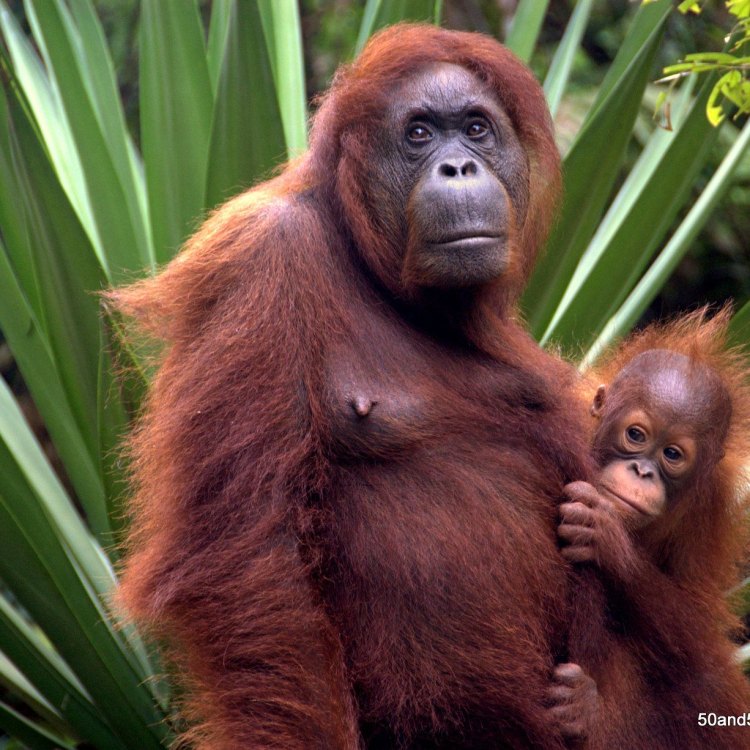
Bornean Orangutan
- Adult Size: Up to 1.4 meters
- Average Lifespan: 40-60 years
- Reproduction: Sexual
- Reproductive Behavior: Polygamous
- Sound or Call: Long calls
- Migration Pattern: Not migratory
- Social Groups: Solitary or semi-solitary
- Behavior: Arboreal and diurnal
- Threats: Habitat loss, illegal hunting, pet trade
- Conservation Status: Critically Endangered
- Impact on Ecosystem: Seed dispersal
- Human Use: Tourism and research
- Distinctive Features: Long arms, large size, dominant males have cheek pads
- Interesting Facts: They are the largest tree-dwelling animals in the world.
- Predator: Human
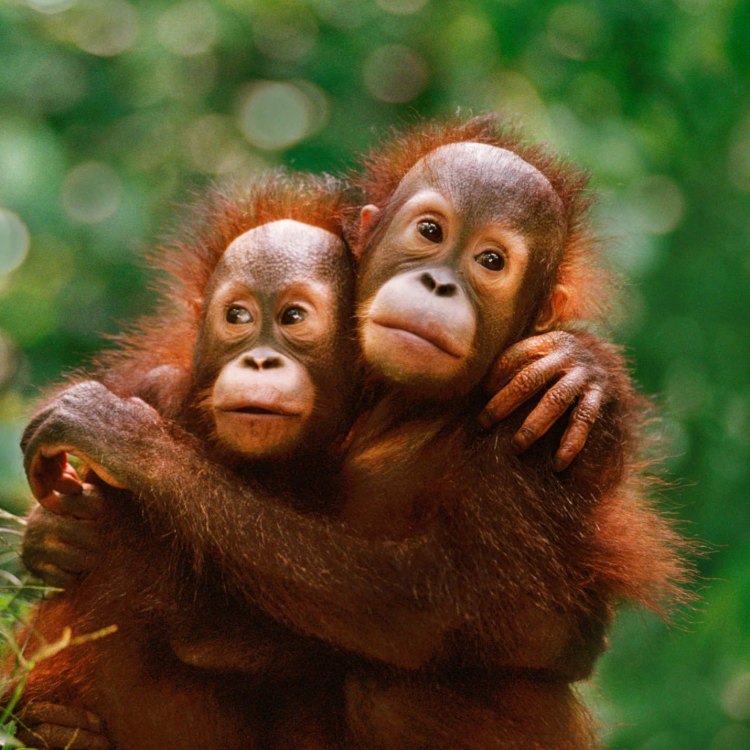
Pongo pygmaeus
The Amazing Bornean Orangutan: An Endangered Species with Unique Behaviors and Impact on Ecosystems
The Bornean Orangutan, also known as Pongo pygmaeus, is one of the most fascinating and critically endangered species in the world. They are found only on the island of Borneo in Southeast Asia and are the largest tree-dwelling animals in the world. In this article, we will explore the unique features and behaviors of this amazing species and shed light on the threats they face and their impact on the ecosystem.Adult Bornean Orangutans can reach a height of up to 1 PeaceOfAnimals.Com.4 meters and weigh around 50-90 kilograms. They have a distinctive reddish-brown fur that covers their entire body, except for their face, hands, and feet. The hair on their heads is longer, giving them a shaggy appearance. Another unique feature of these apes is their large size, which gives them an intimidating appearance.
The average lifespan of Bornean Orangutans is 40-60 years in the wild, while they can live up to 60 years in captivity. This long lifespan is attributed to their slow reproductive rate. Female Orangutans give birth to one offspring every 6-8 years, making them one of the slowest reproducing mammals on Earth.
Reproduction in Bornean Orangutans is sexual, meaning that they require a male and a female to reproduce. However, their reproductive behavior is quite interesting as they are polygamous Braque Francais. This means that one dominant male can mate with multiple females within his territory. This behavior is seen in other great apes as well, but what sets Bornean Orangutans apart is that males do not form long-term bonds with females. Once mating is completed, the male will leave the female and focus on attracting other potential mates.
Bornean Orangutans are known for their long calls - a loud and deep booming sound that can be heard for kilometers. These long calls are used to attract potential mates, warn off intruders, and communicate with other members of their species. Interestingly, each Orangutan has a unique call, making it easy for individuals to identify each other within their social groups.
Speaking of social groups, Bornean Orangutans have a unique social structure as they are mostly solitary or semi-solitary animals. This means that they spend most of their time alone, with occasional interactions with other members of their species. This social behavior is believed to be a result of their slow reproductive rate, as they do not need to form social bonds to protect their young.
When it comes to their behavior, Bornean Orangutans are known to be arboreal, meaning that they spend most of their time in trees. They are also diurnal, meaning that they are most active during the day. This behavior is essential for their survival as they use their long arms to move through the trees and forage for food, such as fruits, leaves, and insects. However, their ability to move on the ground is limited, making them vulnerable to predators.
The biggest threat to Bornean Orangutans is human activity, with habitat loss being the most significant contributor. Due to deforestation for agricultural purposes, these great apes have lost most of their natural habitat. As a result, their population has declined drastically, and they are now listed as critically endangered on the IUCN Red List. Another pressing issue is illegal hunting for their meat and the pet trade, as many people see these magnificent animals as status symbols.
It is essential to note that Bornean Orangutans play a significant role in their ecosystem as seed dispersers. As they move through the trees, they drop seeds on the forest floor, helping to maintain a healthy and diverse ecosystem. Without them, the forest's biodiversity will suffer greatly, impacting other species that rely on these trees for survival.
Despite the threats they face, Bornean Orangutans have found a way to coexist with humans, specifically in the tourism and research industry. Many eco-tourism initiatives have been established to raise awareness about the conservation of these animals and their habitats. These initiatives offer tourists the chance to observe these amazing creatures in their natural environment while promoting sustainable practices. Furthermore, research on their behavior and biology has helped us better understand the complex world of these great apes and their role in the ecosystem.
One of the most distinctive features of Bornean Orangutans is the cheek pads that develop in dominant adult males. These pads are made of fatty tissue and are used to attract females and intimidate rival males. The larger the pads, the more dominant the male is perceived to be. These cheek pads are also used as a cushion during fights, which can be quite brutal between rival males.
In addition to this unique physical feature, there are many interesting facts about Bornean Orangutans that will leave you in awe. Did you know that they share 97% of their DNA with humans? This makes them one of our closest relatives in the animal kingdom. Also, female Orangutans have the longest inter-birth interval of any mammal, making them one of the slowest reproducing animals on Earth. And sadly, their main predator is humans, which is devastating to their already declining population.
In conclusion, Bornean Orangutans are truly remarkable creatures with unique features and behaviors. From their large size to their polygamous reproductive behavior, every aspect of their species is fascinating. However, their survival is at great risk due to human activity, placing them on the brink of extinction. It is our responsibility to take urgent action to protect these amazing animals and their habitat, as they play a crucial role in maintaining the delicate balance of our ecosystem. Let us all work together to ensure the conservation of the Bornean Orangutan for generations to come.

Bornean Orangutan: The Red Gentle Giant of Borneo
Disclaimer: The content provided is for informational purposes only. We cannot guarantee the accuracy of the information on this page 100%. All information provided here may change without prior notice.

